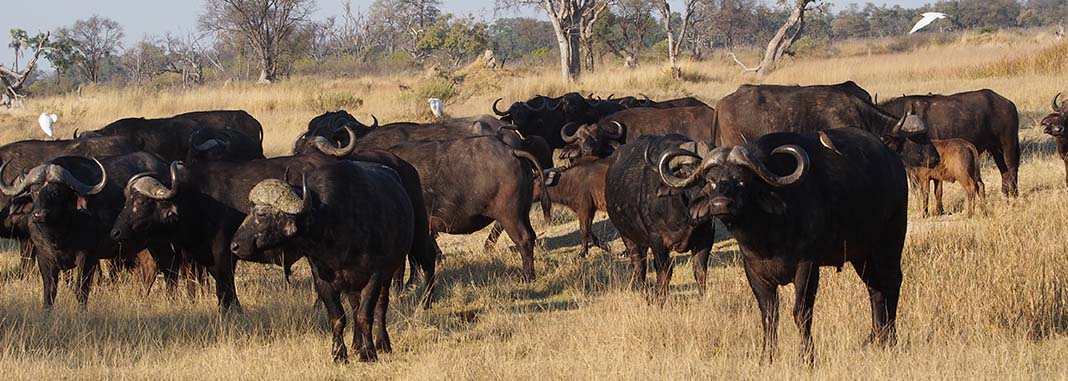Nxai Pan National Park is just a beautiful destination for a safari activity. There are wonderful sand dunes, the famous Baines Baobab and of course the salt pans themselves that when flooded offer a tremendous opportunity to view bird and wildlife. The short grasses that have replaced the salt pans of old, attracts vast herds of ungulates. The best time to visit is from December to April. The location is northeastern Botswana makes it easy to combine one’s visit with Chobe National Park and the Okavango Delta, which reaches into the park. Lodging here includes camping in designated sites operated and managed by private companies.
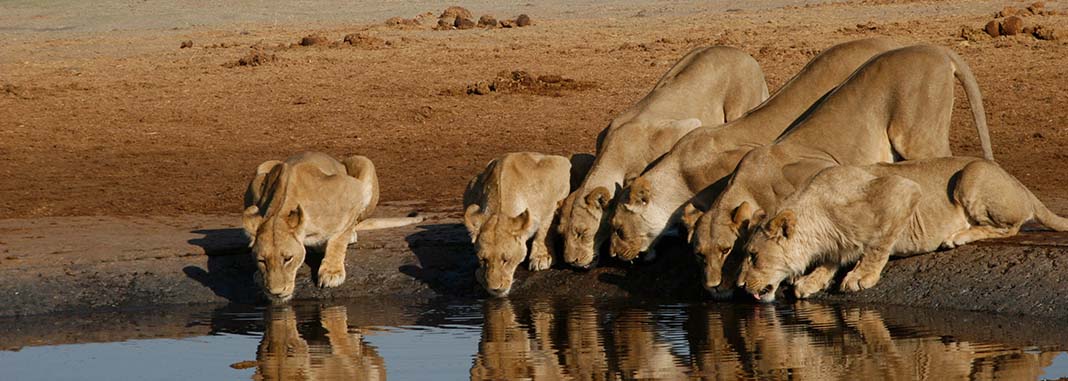
One of the world’s top tourist destinations, the largest inland water delta covers 1 % of the African continent became the 1000 UNESCO World Heritage Site in 2014.The Okavango Delta cuts through the centre of the Kalahari Desert, creating a unique inland water system that gives life to a huge variety of birds and mammals. The Okavango Delta is a unique safari destination because you can view much of the wildlife from a traditional dug out canoe, or more commonly a mokoro. Every year the delta floods covering 16,000 kilometres.The best time to view wildlife is during the peak of the flood, in the dry season from May to October. The wildlife is more concentrated on the islands at this time, and it’s therefore easier to see them, as the flooding recedes, new grass springs up and the wildlife scatters to feed. There are numerous lodges and luxury safari camps here that the company aims to establish partnership with to host their guests. Many of them offer walking safaris and night drives as they are located in Private Concessions.
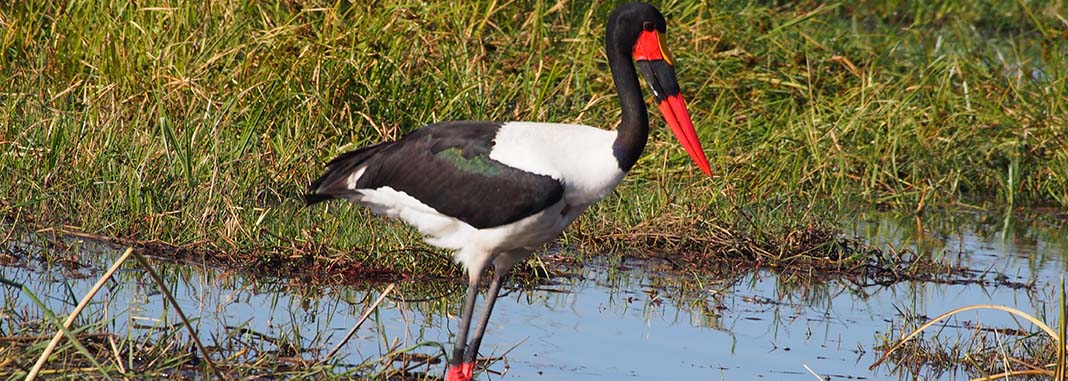
CKGR is within the Ghanzi District, and together with Khutse Game Reserve they form the largest Game Reserve complex in Botswana and the third largest Game Reserve in the world. Forming part of the Kalahari eco system, it supports a wide variety of animals such as Wildebeest ,Hartebeest, Eland, Springbok ,Kudu ,Giraffe ,Brown Hyena, Warthog, Cheetah, Wild Dog, Leopard ,Lion ,Blue Wildebeest and Gemsbok. The word “Kalahari” is derived from the Tswana word “Kgala” meaning “great thirst “–and it has vast areas without any permanent water. The term “desert” is however not quite accurate when referring to the Kalahari, the region receives an annual rainfall of 60 mm – 175 mm,too high to be classified as a true desert. The Kalahari’s vegetation consists mainly of grasses and acacia’s as well as stunted thorn and scrub bush. There are over 400 identified plant species present. Annual rain season is between December and March when summer temperatures can get quite high. After the summer rains – the CKGR completely transforms as the blue sky fills with huge clouds, and the plains and pans burst with sweet grasses. This is one of the best game viewing areas in Botswana at this time of the year and not many people seem to be aware of this – so the visitors are few. The dry season between May – September is also a wonderful time to visit the CKGR s the animals congregate close to any surface water and pans.CKGR activities are considered as “Dry Safari” ,while the Okavango is referred to as “Wet Safari” – terms synonymous with the conditions found in the two areas subsequently.
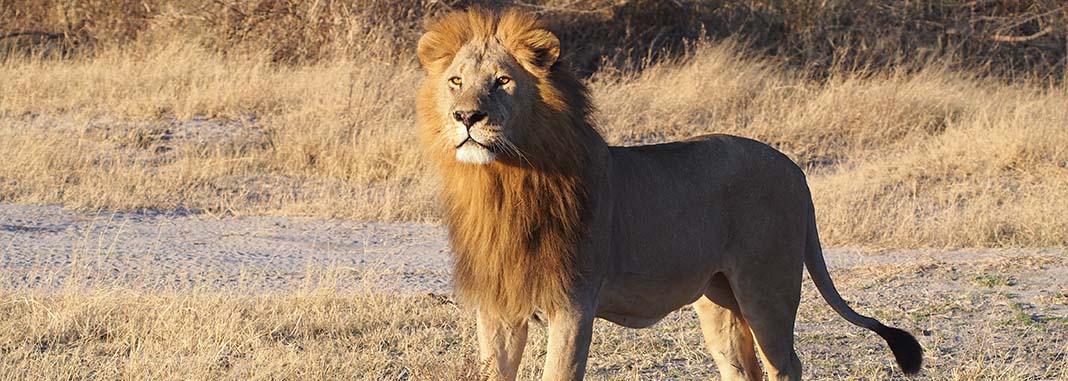
Chobe National Park lies on the border of Moremi Game Reserve and covers four distinct Eco – Systems. The Savuti marsh in particular offers some of the highest concentrations of wildlife in Africa year around. Chobe boasts around 120,000 elephants and they are a wonderful sight to watch from the water on a safari cruise, popular at sun down. The best time to visit Chobe is between May and September, the dry, cooler winter months. Zebra herds, Eland, Buffalo, Giraffe and Wildebeest congregate here this time of the year. Chobe is accessible by car which makes it a bit more affordable than some other parks in the country. There is a wide variety of accommodation available and other support activities to suit all budgets.
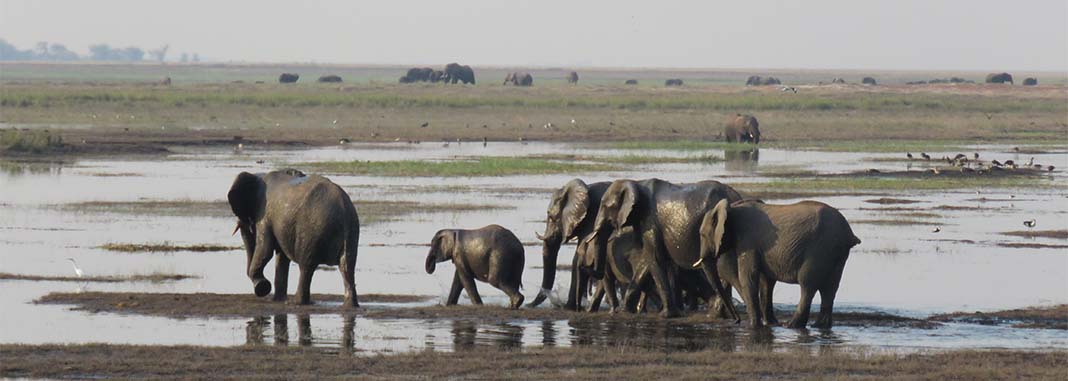
Tsodilo Hills is spiritual outdoor gallery, showcasing more than 4000 ancient San Bushmen rock paintings. There are around 400 sites depicting hunting scenes, dances and animals. Some rock art dates back more than 20 000 years and archaeologists have ascertained that people lived in this area as far back as 10,000 years ago. The San Bushmen believe this sacred area is in the site of the first creation of man, and a resting place for spirits of the dead. Not surprisingly, this is a UNESCO World Heritage Site. Visitors can expect to hike the three main halls, using local people as guides. There is a basic campsite and small but informative museum on site.
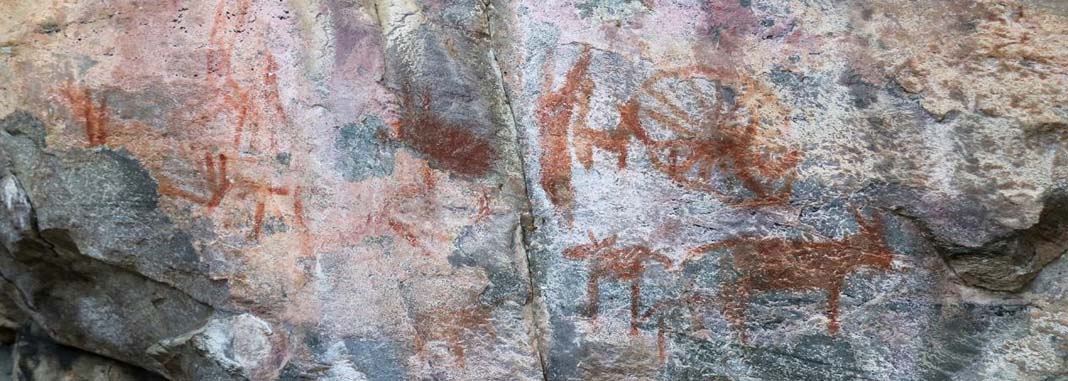
The road to the delta is a dusty sand road through small villages and concession areas. The mighty Okavango River is the third largest river in Southern Africa. Its delta of which Moremi Game Reserve forms approximately 33 % covers a landmass of 16000 square kilomteres.The panhandle forms pyramids of crystal clear waters, channels woven together by small lakes and islands – under constant transformation. The water flows down from the Angolan Highlands, 1000 km North West and it takes around six (6) months to reach the end of the delta. Throughout the years and different seasons, the areas embrace one with unique wildlife and wilderness experiences.
